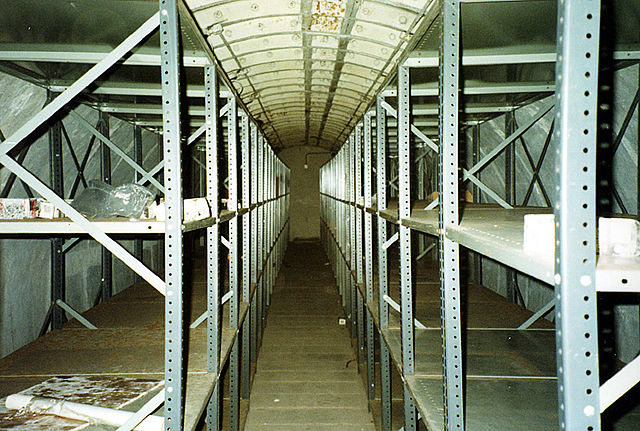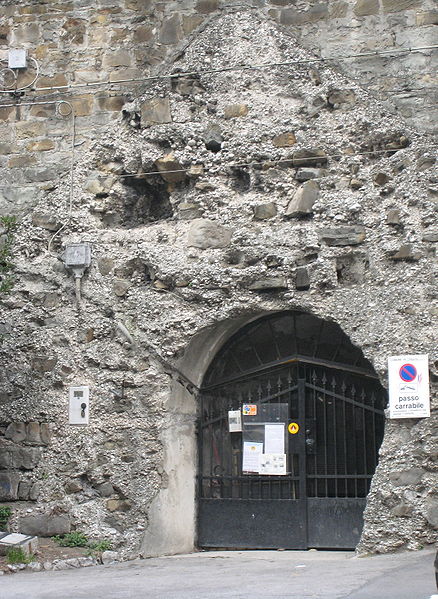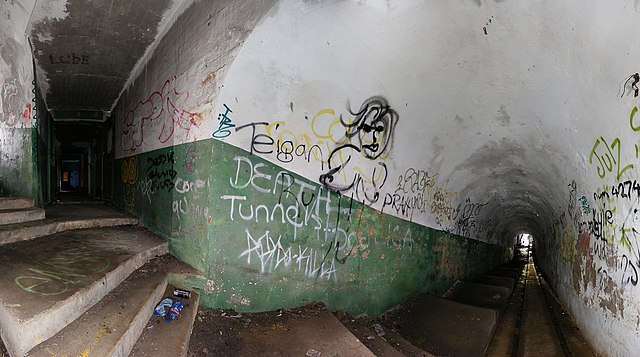Air raid shelters are structures for the protection of non-combatants as well as combatants against enemy attacks from the air. They are similar to bunkers in many regards, although they are not designed to defend against ground attack.
One of the London deep-level shelters, in Belsize Park
Kleines Berlin ('Little Berlin' in German) is the complex of underground air-raid tunnels dating to World War II, which still exists in Trieste, Italy
Single-person air raid shelter on display at the Günter Leonhardt aviation museum near Hannover, Germany
The Hochbunker in Trier
A bunker is a defensive military fortification designed to protect people and valued materials from falling bombs, artillery, or other attacks. Bunkers are almost always underground, in contrast to blockhouses which are mostly above ground. They were used extensively in World War I, World War II, and the Cold War for weapons facilities, command and control centers, and storage facilities. Bunkers can also be used as protection from tornadoes.
The Flakturm at the Augarten in Vienna. Flak towers were used as both above-ground bunkers and anti-aircraft gun blockhouses by Nazi Germany
The north entrance to the Cheyenne Mountain Complex in Colorado, United States
Inside the Hill 60 Bunker, Port Kembla, New South Wales, Australia. One of many bunkers south of Sydney
In a Project 131 tunnel under the hills of Hubei








